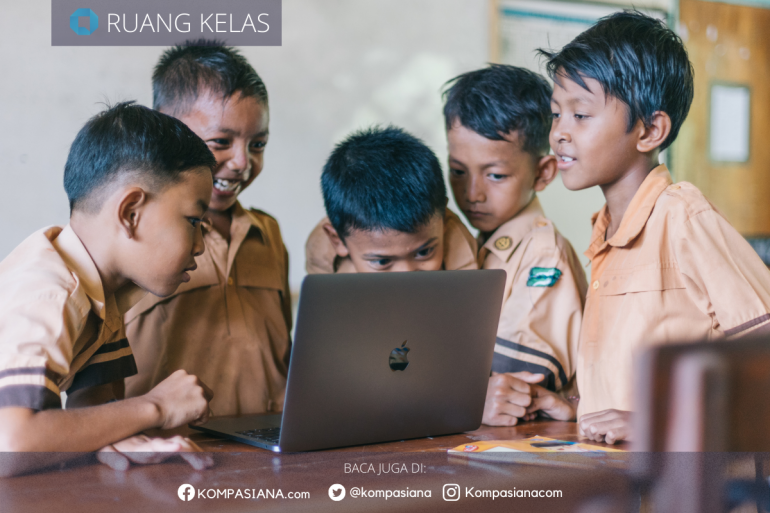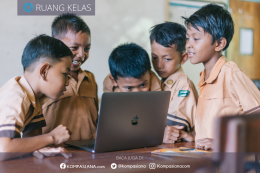Today, we live in an age where gadgets, technology and social media have become part of our lives. From the moment we wake up to the moment we wake up again, they are deeply embedded in everyone's routines and daily lives. Our fingers are busy scrolling through Youtube and TikTok videos, updating the latest issues on X (Twitter), or maybe looking for inspiration and ideas on Instagram feeds and Pinterest homepage. It is common knowledge that amidst the abundance of entertainment and fun content, social media has also begun to be utilized as a platform for the publication of educational content. So, it can be easily accessed by many people and become an alternative means of education other than in schools where the topics are already very diverse, especially in today's digital era where the packaging is made as attractive as possible so that the audience stays. However, is this kind of educational utilization in Indonesia really effective?
Social Media is the New Platform for Learning
The advancement of social media in Indonesia has shaped new opportunities for more inclusive education. One case in point is during the Covid-19 pandemic, when everything related to teaching and learning really had to go digital. Youtube and Google Classroom became the mainstay of education workers to provide material online. Youtube, in particular, is filled with various educational topics, ranging from school subjects, college materials, and even general knowledge. Educational channels have proliferated, helping millions of students to access lessons from home to the general public who are looking for knowledge content.
On the other hand, TikTok, a platform more commonly known as a short video-based entertainment platform, is experiencing a similar content trend. Educators and content creators are starting to package knowledge in the form of short, entertaining 15-60 second videos that are easy to digest. Seen from popbela.com, one example of an educational phenomenon that went viral and was hotly discussed on this platform is the #BelajarDiTikTok and #SamaSamaBelajar campaigns in 2020 as an effort by the platform to support educational content in Indonesia, which has gained 95 billion views after two years. Due to the crowds and high enthusiasm there, TikTok launched a similar campaign titled #SerunyaBelajar in 2022 and managed to get a similar positive reaction. These campaigns promote a lot of educational content such as learning tips, careers, science, finance, motivation, life-hacks, and even study materials. From this, anyone can learn independently in this instantaneous era and show that social media can be a fun educational tool.
Social Media as an Educational Tool
One of the biggest advantages of social media is its ease of access. The internet and technology are now more accessible than ever, and anyone can easily connect with them. The content available is also free, especially on Youtube and TikTok, while offering the flexibility of time and place to be accessed whenever and wherever they want, as long as there is an internet connection.
Another reason is that educational content presented on social media is always packaged in a creative, interactive yet informative way. Aside from the variety and abundance of topics, learning materials will look much more attractive and accepted by various groups, especially for children and teenagers. It is not only educational, but also fun.
This is the Challenge: Disinformation and Distractive Content
Utilizing social media as an educational platform undeniably also has a number of challenges. One of them is disinformation. On these platforms, anyone can create content, so not all information can be confirmed for accuracy and accountability. There have been many cases of content creators spreading misleading information and lacking credibility, for example, some TikTok beauty influencers have been caught giving skin health or diet tips that are harmful and should not be emulated.
The entertainment content that dominates social media can also be very distracting. For example, a child watching an educational video on YouTube is easily tempted to watch a recommendation video that has nothing to do with learning. As a result, time is wasted watching time-wasting and useless content.
Closing: Social Media Optimization for Education
The delivery of education on social media is a tool with great potential. It can be a very effective tool to learn new information, increase knowledge, upgrade skills and support formal learning. However, it requires information filters and good policies in utilizing it. We need to mobilize the collaboration of various parties including the government, educational institutions, platforms and content creators to provide more quality education so that social media is not just entertainment but an engaging and useful learning tool not only for learners, but also for everyone.
Baca konten-konten menarik Kompasiana langsung dari smartphone kamu. Follow channel WhatsApp Kompasiana sekarang di sini: https://whatsapp.com/channel/0029VaYjYaL4Spk7WflFYJ2H







